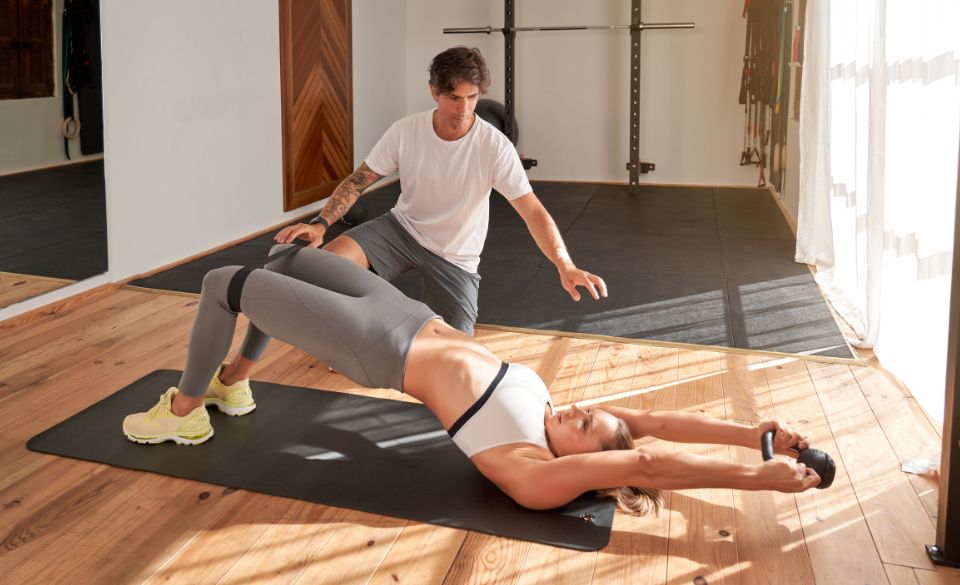
The Best Glute Activation Exercises For Cycling
Page Contents
If you’re an avid cyclist or a newcomer to the world of biking, you’re likely aware of the critical role your glutes play in propelling you forward with power and efficiency. Strong glutes not only improve your cycling performance but also reduce the risk of injuries and discomfort on long rides. In this article, we’ll explore the best glute activation exercises tailored specifically for cyclists, supported by scientific studies, to help you enhance your pedal stroke and conquer the open road.
The Importance of Glute Activation in Cycling
Before diving into the exercises, let’s understand why glute activation is vital for cyclists. Your gluteal muscles, including the gluteus maximus and gluteus medius, are responsible for generating power during each pedal stroke, stabilizing your pelvis, and maintaining proper posture on the saddle. Weak glutes can lead to imbalances in your leg muscles, increase the risk of overuse injuries, and hinder your cycling performance. Therefore, activating and strengthening your glutes is essential for an efficient and injury-free ride.
1. Bridges with Resistance Bands
How to do it:
1. Lie on your back with your knees bent and feet flat on the ground.
2. Place a resistance band just above your knees.
3. Lift your hips off the ground, squeezing your glutes at the top.
4. Hold for a moment, then lower your hips back down.
Why it works:
Bridges with resistance bands activate the gluteus maximus and the gluteus medius while also engaging the hip abductors. The resistance band adds an extra challenge, making this exercise highly effective for cyclists. A study published in the “Journal of Physical Therapy Science” found that resistance band exercises significantly increase gluteus medius muscle activity, enhancing hip stability—a critical factor in cycling.
2. Step-Ups
How to do it:
1. Stand in front of a sturdy step or bench.
2. Step one foot onto the step and push through your heel to lift your body up.
3. Bring the other foot up and stand on the step.
4. Step back down, leading with the foot you started with.
5. Repeat with the opposite leg.
Why it works:
Step-ups target the gluteus maximus and require hip extension, replicating the motion of pushing down on the pedal during cycling. A study in the “Journal of Strength and Conditioning Research” showed that step-up exercises significantly activate the glutes, making them an excellent choice for glute activation in cycling training.
3. Clamshells
How to do it:
1. Lie on your side with your legs bent at a 90-degree angle and your feet together.
2. Keeping your feet touching, open your knees as far as you can while maintaining the position of your feet.
3. Hold for a moment, then return to the starting position.
Why it works:
Clamshells target the gluteus medius, a crucial muscle for pelvic stability while cycling. A study in the “Journal of Orthopaedic & Sports Physical Therapy” found that clamshell exercises effectively activate the gluteus medius, making them beneficial for cyclists looking to improve hip stability.
4. Single-Leg Romanian Deadlifts
How to do it:
1. Stand with your feet hip-width apart.
2. Shift your weight onto one leg while slightly bending the knee.
3. Hinge at your hips, keeping your back straight, and extend your free leg behind you.
4. Lower your torso until it’s parallel to the ground or as far as your flexibility allows.
5. Return to the starting position.
Why it works:
Single-leg Romanian deadlifts are a functional exercise that activates the gluteus maximus while also improving balance and stability—essential for cyclists navigating uneven terrain. A study in the “Journal of Strength and Conditioning Research” demonstrated that single-leg exercises effectively engage the glutes and enhance hip stability.
5. Cable Kickbacks
How to do it:
1. Attach an ankle strap to a low pulley cable machine.
2. Strap the ankle strap to your right ankle and stand facing the machine.
3. Hold onto the machine for support and bend your left knee slightly.
4. Keeping your right leg straight, kick it backward, squeezing your glutes at the top of the movement.
5. Slowly return your right leg to the starting position.
Why it works:
Cable kickbacks isolate and target the gluteus maximus, providing a focused and controlled movement to activate and strengthen this crucial muscle. The cable resistance ensures that your glutes are working against consistent tension throughout the exercise, making it highly effective for glute activation.
6. Hip Thrusts
How to do it:
1. Sit on the ground with your back against a bench, your knees bent, and your feet flat on the floor.
2. Roll a barbell or place a weighted plate across your hips.
3. Place your hands on the barbell or weight for stability.
4. Drive through your heels to lift your hips off the ground, creating a straight line from your shoulders to your knees.
5. Squeeze your glutes at the top of the movement, then lower your hips back down.
Why it works:
Hip thrusts are a potent exercise for glute activation and strengthening. They specifically target the gluteus maximus while also engaging the hamstrings and lower back. Research published in the “Journal of Applied Biomechanics” found that hip thrusts elicit high gluteus maximus activity, making them an excellent choice for cyclists looking to enhance their glute power.
Incorporating Glute Activation Into Your Routine
To maximize the benefits of these glute activation exercises, consider adding them to your warm-up routine before hitting the saddle. Perform 2-3 sets of 10-15 repetitions for each exercise, paying close attention to proper form and controlled movements. Gradually increase the intensity or resistance as your glute strength improves over time.
Final Thoughts
Glute activation exercises are not just a means to an end; they are the gateway to a more enjoyable and efficient cycling experience. By dedicating a small portion of your workout routine to strengthening and activating your glutes, you can transform your pedal stroke, conquer challenging terrain with ease, and reduce the risk of cycling-related injuries.
Remember that consistency is key when it comes to glute activation. Make these exercises a regular part of your warm-up routine before cycling, and gradually increase the intensity to continue challenging your glutes.



